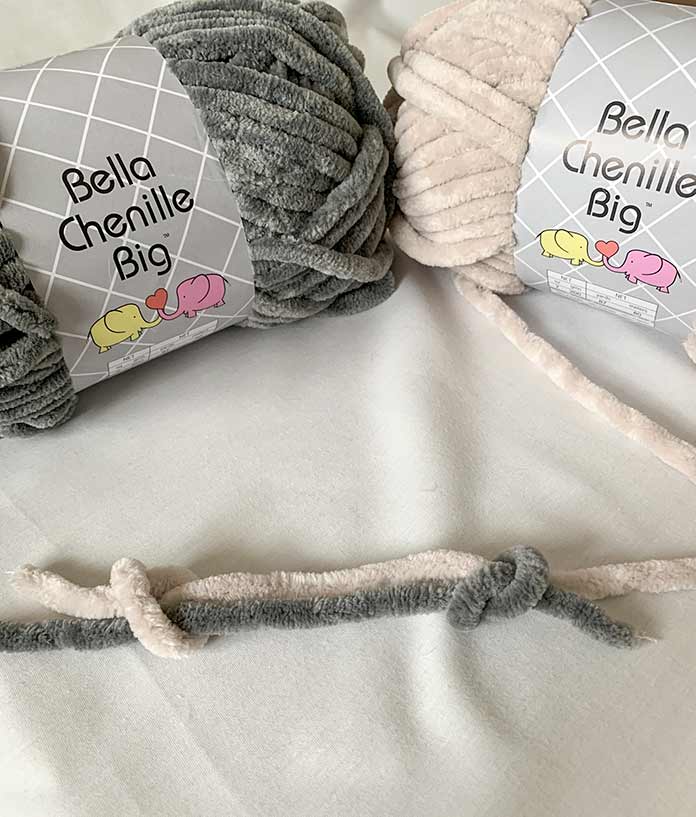Through the week we’ve talked about tips and tricks to knitting with Bella Chenille Big. In yesterday’s post, I gave you tips on what to keep in mind when knitting a wickerwork stitch patter using a big yarn like Bella Chenille Big.
For the Mosaic Cowl we need to carry the yarn up the inside of the cowl, which is very easy. There’s no worry about weaving in the main color or the contrast color because they’re easily carried, but what about joining new balls of yarn?

These would be the same two colors when you’re joining them, but for the purpose of illustration, I chose two different ones.
If you’re knitting a blanket, you’ll need to tie in another ball sooner or later (with Bella Chenille Big it will seem like no time at all).
Now, depending on how you attach a new ball this may be a huge variation for you or a very little one. Personally, I weave in a new ball. I start to carry the yarn behind for about 10 stitches, then switch my working yarn and carry the old ball behind for about 10 stitches as well. This is my favorite way to join a new yarn because then I don’t have a billion ends to weave in when the project is completed. The issue with this technique and Bella Chenille Big is the thickness of the yarn. If carried behind, a lump will show in the middle of the row.

Tie slip knots around each other and pull tight against the individual strands.
You can knot the yarn and weave in the ends, but you’re still going to have that lump. There’s a special knot you can use where you can trim both the ends and just leave the knot. You can keep knitting as usual and Bella Chenille Big is so fluffy, you won’t even see the knot. This way there are no ends that need to be woven in and your join is very inconspicuous. Yeah!

Pull the strands of the working yarn (not the loose ends) tight until the two knots meet in the middle. Pull firmly until tight and trim the ends.
Like I said on Wednesday, a special yarn takes special care and we can do things a little differently to really make this yarn shine. Making seamless changes in yarn is a finishing touch that really takes your knitting to another level, especially when it’s done well with an uncommon yarn. I hope you enjoyed this week of knitting fun using Bella Chenille Big.

Here’s a knot join with the two strands of the color Elephant and the ends trimmed. Barely visible!

1 comment
I just pull a few inches of the chenille off of the base threads, then tie those base threads together using a surgeon’s knot. The chenille meets end-to-end, no bulk, very sturdy. I’ve made one (huge!!) afghan for my 6’4″ brother and doing a second normal afghan for me, then I’ll never do this again! WAY too heavy for having arthritis, and the afghans end up pretty heavy as well. TIP for washing the finished project: slip smaller work inside of a pillowcase and close with large safety pins, or put those huge afghans inside a duvet cover and close as usual; machine wash on gentle, keep projects inside the bags, add a towel and fluff for a few minutes in dryer on low heat then lay flat to finish drying.